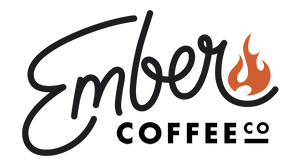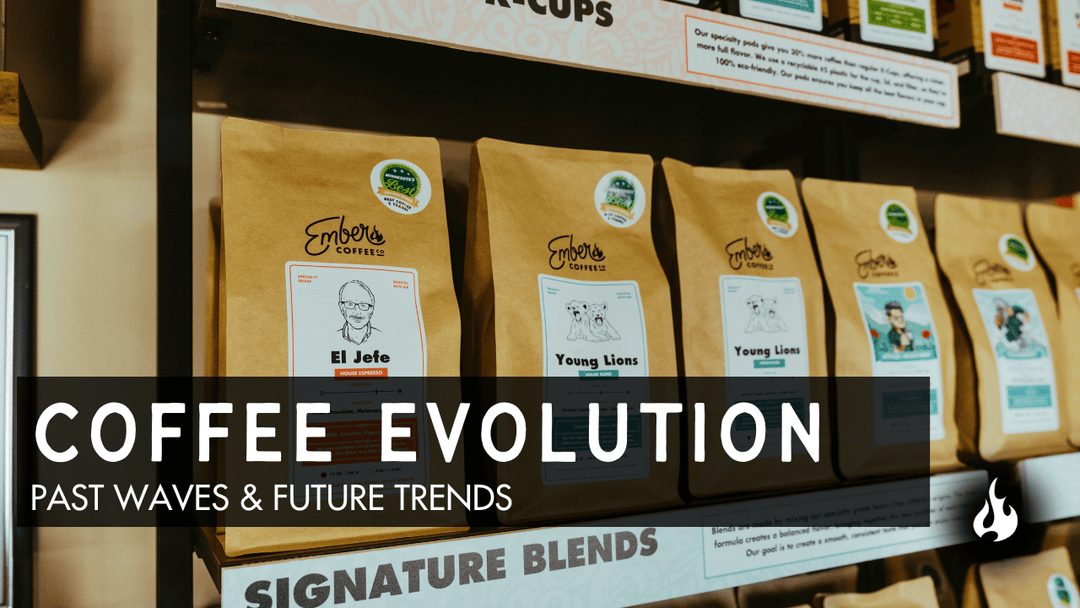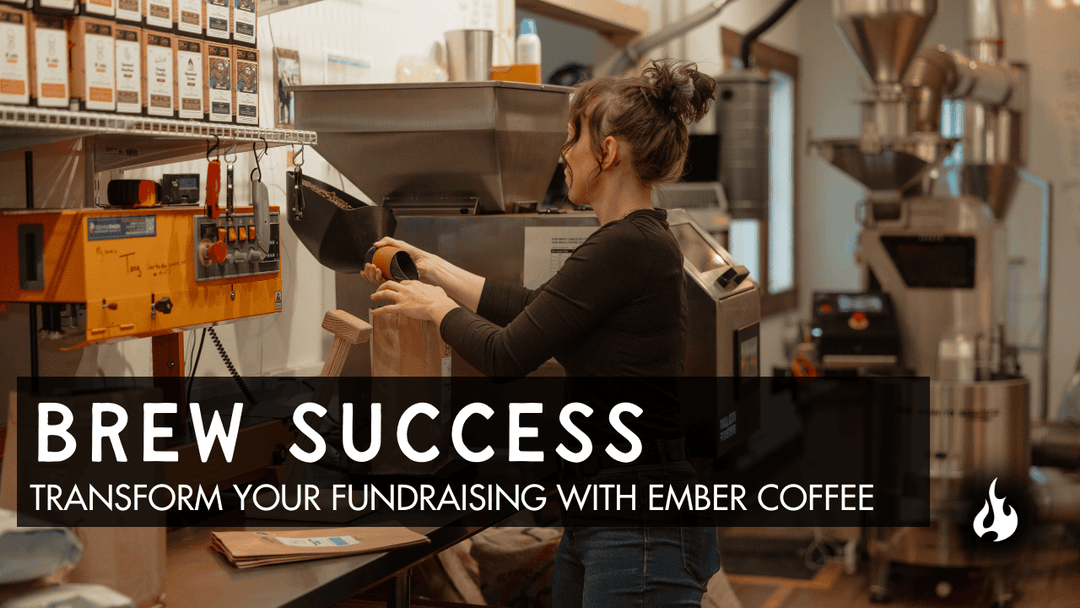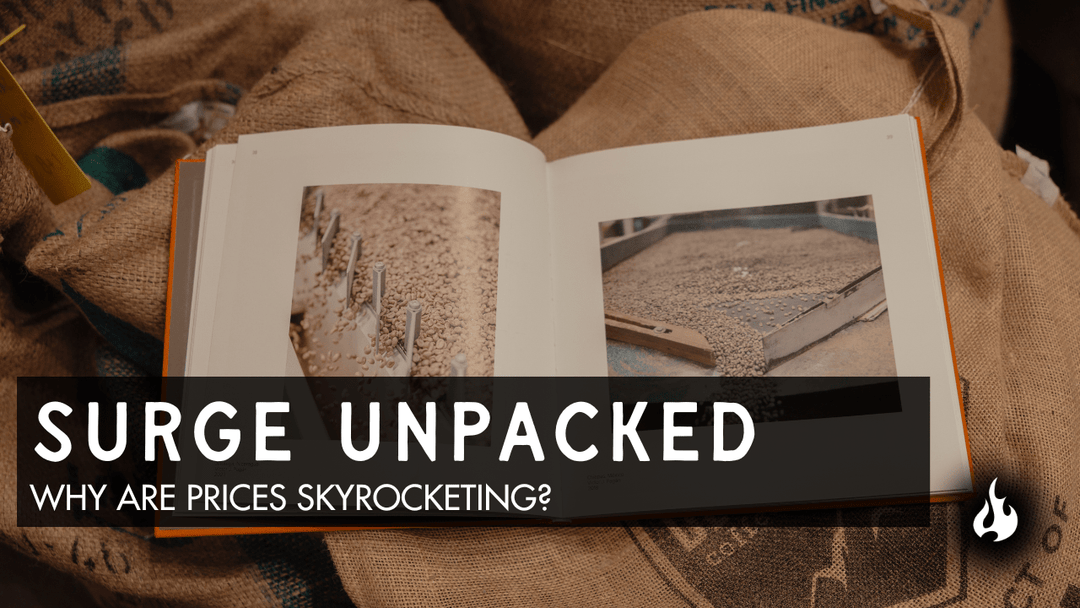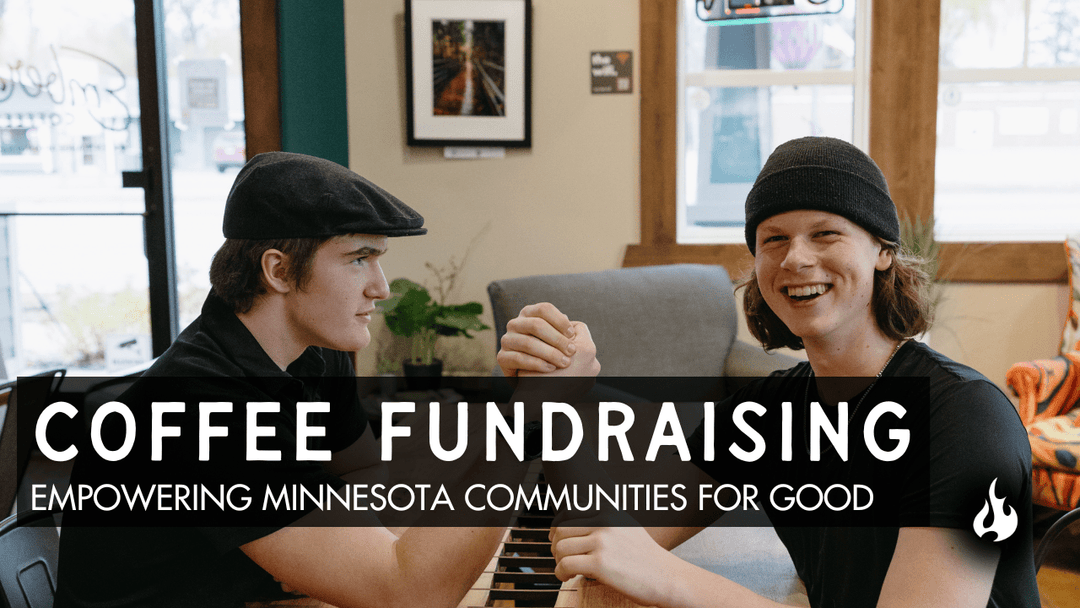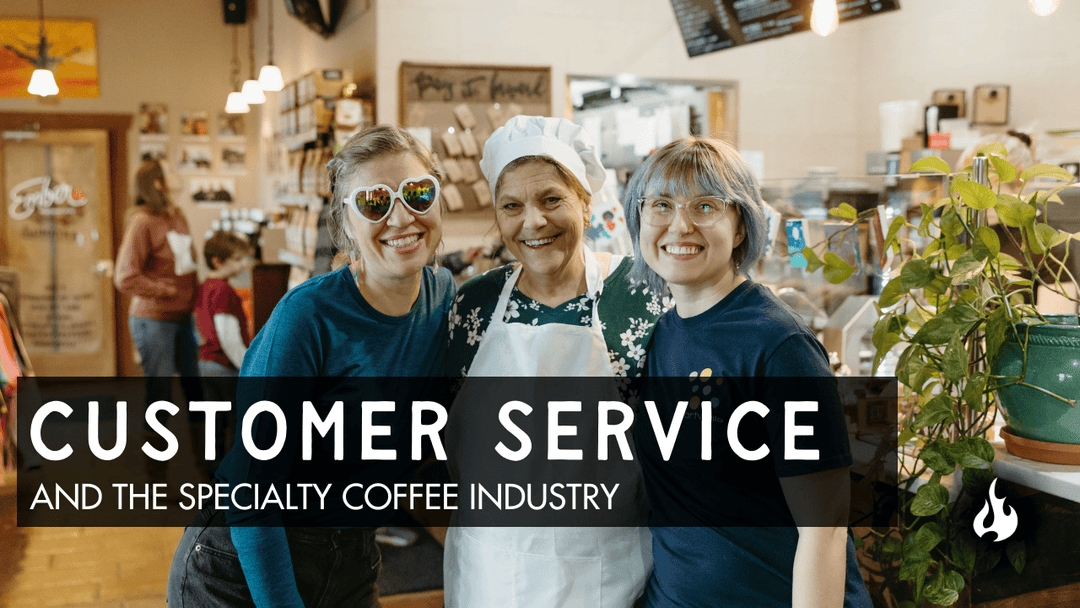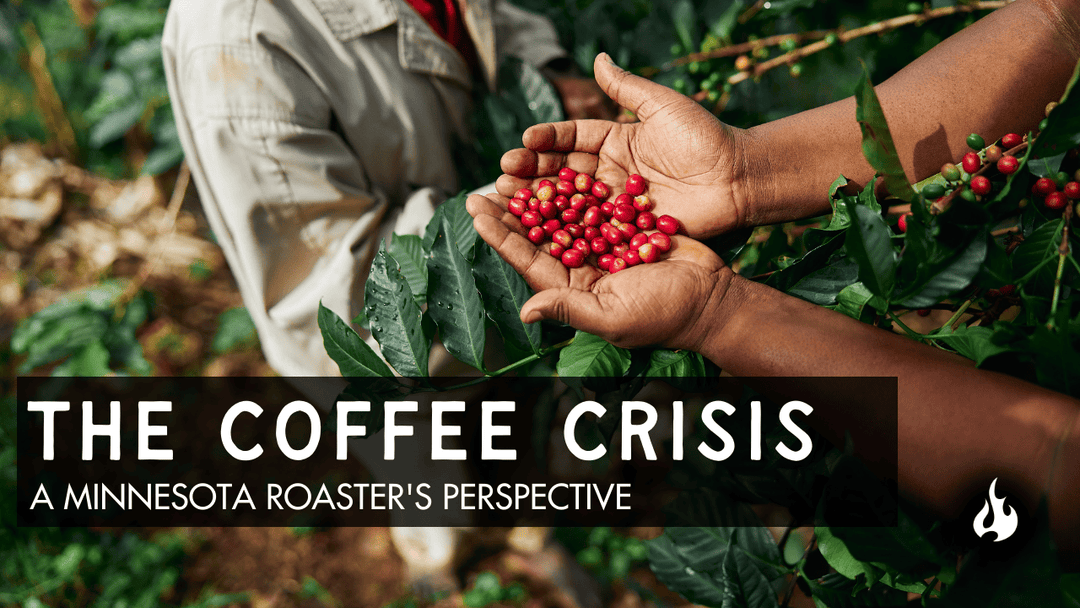Starting a Coffee Shop? Read This First
Within every thriving community, you'll likely find an independently-owned coffee shop. In today's world, coffee shops serve as key spaces for community members to connect and engage. It's no surprise that many are curious about the viability of starting their own coffee shop. Here, we share insights from our years of experience running Ember Coffee. We know because we've done it!
Starting a Coffee Shop? Read This First
Within every thriving community, you'll likely find an independently-owned coffee shop. In today's world, coffee shops serve as key spaces for community members to connect and engage. It's no surprise that many are curious about the viability of starting their own coffee shop. Here, we share insights from our years of experience running Ember Coffee. We know because we've done it!
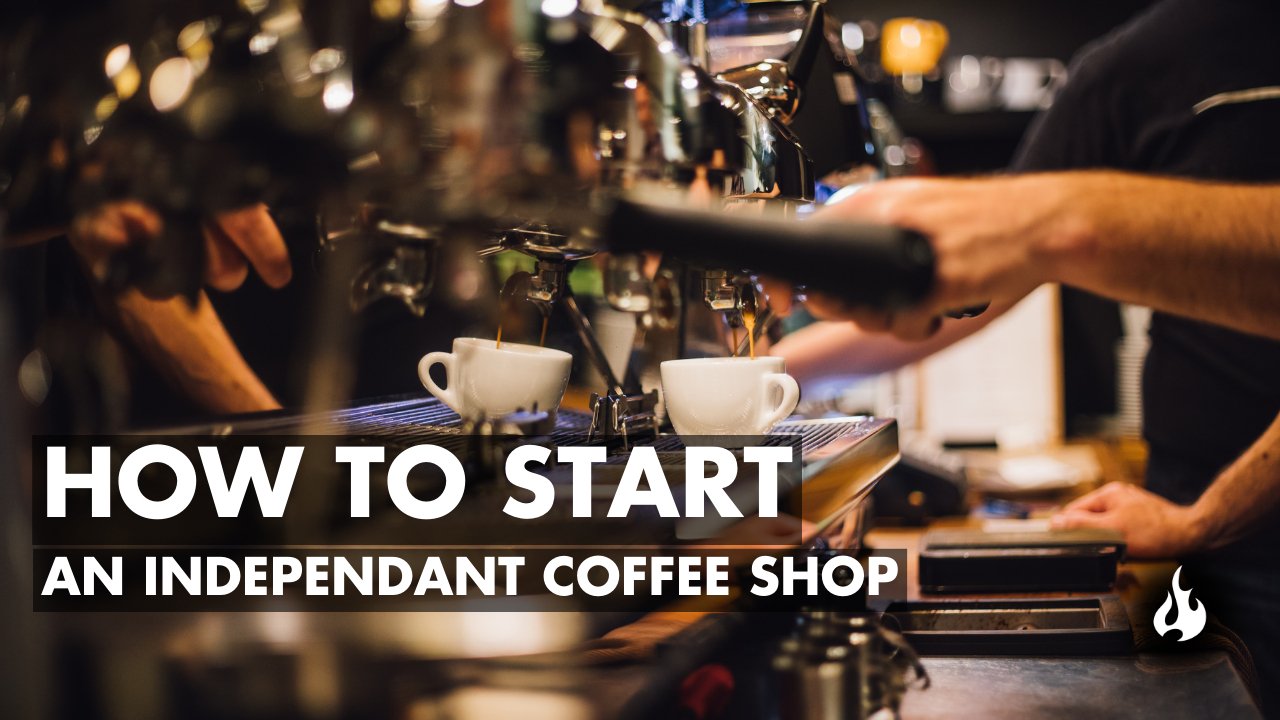
Within every thriving community, you'll likely find an independently-owned coffee shop. In today's world, coffee shops serve as key spaces for community members to connect and engage. It's no surprise that many are curious about the viability of starting their own coffee shop. Here, we share insights from our years of experience running Ember Coffee. We know because we've done it!
Let’s explore how to start a coffee shop.
What we know about coffee shops
Like many, we took a leap of faith when opening Ember Coffee. None of us had prior experience running a business like this, but with a vision and a lot of passion we set out on the journey. Now several years later, we operate a successful cafe, a kitchen, and a roastery. We employ over 20 individuals, some of whom have been with us nearly from the start. To say we’ve learned a few things along the way is an understatement. We’ve learned a ton, some through successful hunches and some through utter failure. Thankfully we’re able to apply those lessons learned to further our business and continue our growth. We’re thankful for the people who coached us along the way by sharing their experience. And now we’re excited to share ours.
The coffee shop concept
On one side of the coffee offering spectrum, you have restaurants. For them, coffee is a tertiary product that is served after a meal. In the middle, you have cafes where coffee becomes a secondary offering served to nearly every customer alongside made-to-order dishes. And on the other side of the spectrum, you have coffee shops.
The primary offering of a coffee shop is, well, coffee. Not only is it in the name, but coffee beverages are also the number one seller. Second to coffee is food, mostly pre-made pastries and light made-to-order dishes. And third, packaged goods like coffee bags and chocolate bars, as well as other retail, will be tertiary offerings. This is important to consider as the concept will have a tremendous impact on your start-up costs.
12 Steps to Opening a Coffee Shop
1. Cast the vision
Develop a vision for your customer experience. What are you offering your community that doesn’t already exist? Who in your community are you targeting? What reputation do you want to obtain? Articulate this vision by creating a slide deck. Using images and text to tell the story. Dream big!
2. Build the business model
Now focus your vision into a model for a sustainable business. We recommend the Business Model Canvas, an easy to build table for developing your business model.
3. Set your menu
By this point, you probably have an idea of what you want to serve. Mock up a menu including all sizes and variants for all items. Once you’ve gotten everything written out, start chopping. Go item by item and ask if it is essential to your business’ success. If it’s not, cut it. A focused and concise menu will help you perform better than a bloated menu with too many options.
4. Find a location
You’ll be looking in areas that are either urban or suburban. Neither is better than the other, and there are pros and cons to both. Keep in mind that your rent or mortgage should cost you no more than 10% of your net revenue. If a location costs $5,000/mo, you should be able to bring in at least $50,000/mo in revenue. If you don’t think you can, keep looking.
Urban locations have high foot traffic and visibility. They’re in densely populated areas that also have high price tags. The benefit is you’ll be taking advantage of the draw the city creates. You’re going to where the people already are. In these areas, plan to rely heavily on to-go orders. At least half your sales will be from takeaway orders. Therefore, lots of seating isn’t necessary, and you can look for smaller spaces to stay within budget.
If you’re looking in the suburbs or on the outskirts, you will likely become a destination drawing people to you. Because of this, you’ll need to find a location large enough for plenty of seating. Customers will likely want to spend time in your shop, so don’t lose a potential customer because all the seats are taken. If you are in a car-heavy area, consider a drive-thru. Drive-thrus can be very successful if you’re able to keep up with the quick pace. Finding larger locations in the suburbs should still keep you within budget because of the cheaper price tag.
5. Design the shop
Now that you have a location in mind, hire an architect to help you lay it out. Architects know the building codes and laws to help you avoid costly changes later. You’ll not only be navigating building code but also health department requirements for food prep and city laws for accessibility.
6. Hire a contractor
Getting the right contractor to handle the build-out is critical. Once you have your architecture drawings done, send them to several contractors and get multiple bids for the project. You may have a number in mind, but by getting several bids, you’ll be able to zero in on the true cost. Hire someone with a good rate and a good track record. You don’t want to have to repair poor work later on. Also, build-outs almost always take longer than projected. So be sure to pad your schedule and don’t let it stress you if construction takes a few weeks longer than anticipated.
7. Finance
Financing can be the most discouraging step in the process. Once you have an idea for the build-out costs, but before you sign any contracts, you need to secure your financing. You’ll either be looking for loans or investment. With investment, you’ll be giving away ownership for capital. This is a great way to finance your shop as long as you and your investors are in alignment.
Personal loans can be the easiest way to finance as long as the terms are spelled out clearly like interest rates and payback dates. Loans from banks or the SBA (Small Business Association) are other options, but don’t be discouraged if they tell you no. Banks are typically pretty conservative when lending money to coffee shops. Try your best to avoid credit card debt. Credit cards are the most expensive way to finance your shop.
8. Set up services
Most of the items in this list will be happening simultaneously. While you are building out, hiring, and marketing, you’ll also need to be setting up all your services. Services like utilities, internet, security, your POS system, music, and service providers like CINTAS who provide towels, soaps, and floor mats.
9. Make it legal
In this business, asking for forgiveness is not easier than permission. Make sure you’re meeting all the legal requirements for operating a business. By this point, you should’ve already set up your LLC with your lawyer or CPA.
If you have business partners you should’ve also already set up your Operators Agreement as well. Now you’ll need to apply for an EIN (employee identification number) with the IRS, a state business license, and when you’re ready to open, you’ll need a certificate of occupancy. And definitely don’t forget about insurance coverage!
10. Hire and train
Provide plenty of time prior to opening for your team to build camaraderie and confidence. Train on customer service, prep, and bar flow. Use our reference below on figuring out who and how many to hire.
11. Market, market, market
Build hype! You want your community eagerly awaiting your opening. Start marketing your business at step 1 in this list. Make a splash by announcing your new business on social and with the local news. Get your family and friends involved.
Don’t lose momentum after the announcement, but keep it building by releasing information like the menu, renderings of the layout, pictures of construction, etc. Do small coffee pop-ups throughout the community during build-out to give people a taste. This will help ensure you have a line out the door on opening day.
12. Open!
Yay! You finally made it. Before announcing to the public that you’re open for business, work out the kinks by soft opening. At your first soft opening, invite family and friends, and if you can, don’t charge them. This is a gesture to thank them for supporting you, but also give your staff a warm-up. Plan to open for just a few hours, close, and spend a few hours with your staff working through what they learned and adjust what needs adjusting. Then do another soft open where you’re open to the public, but just let the word spread naturally. This will help prevent a rush that can overwhelm your new staff. Once you feel good, announce it to the world! Have balloons, a ribbon-cutting, get the mayor out, a DJ, and do everything you can to make it a celebration because you deserve it!
How much it all costs
TThe largest hurdle when opening a coffee shop is financing. And to figure out your financing, you need to have an accurate understanding of how much it will cost. And that depends entirely on your business model. The demographic you’re targeting, where they’re located, and the menu and experience that will appeal to them are the primary considerations when estimating your start-up costs. Keep in mind that you should have a goal of paying off your start-up costs within the first 5 years and ideally within the first 3. Your goal is to get to profitability as fast as possible. When estimating how much capital you’ll need to get off the ground, here are the things to consider.
Build-out ($100k-$300k)
Build-out is going to be your largest startup cost. Depending on the size of the space, your concept, and how much demolition and installation you’ll be doing, your cost will vary significantly. Finding a location that was previously a food & beverage establishment is a great way to reduce your build-out cost. Spend lots of time evaluating your layout and workflow to identify efficiencies like power and water placement. Expect build-out costs to fall somewhere between $100,000 and $300,000.
Equipment ($30k-$60k)
Equipment is the second largest cost when starting up. And it’s your menu that will dictate it. The equipment for a coffee shop falls into 3 categories: specialty equipment, commercial kitchen equipment, and ancillary equipment. Expect equipment costs to be between $30,000 and $60,000.
Specialty equipment
-
Espresso Machine: The heart of any specialty coffee shop, this machine is vital for crafting everything from lattes to macchiatos, ensuring each cup meets the high standards your customers expect.
-
Pitcher Rinser: Installed beside the espresso machine, this tool swiftly cleans pitchers between uses, maintaining the quality of milk-based drinks and speeding up the beverage preparation process.
-
Knock Box: A simple yet indispensable tool for quickly disposing of used espresso grounds, keeping the bar area clean and efficient.
-
Grinders: Critical for any coffee shop that prides itself on freshness, having separate grinders for espresso and regular coffee allows you to grind beans on-demand, preserving their flavor and aroma.
-
Batch Brewer and Airpots: Essential for serving high volumes of coffee during peak hours, these allow you to brew large quantities that stay hot and fresh, catering to customers in a hurry without compromising quality.
-
Hot Water Tower: Ensures that hot water is always available for tea and other beverages, facilitating efficient service and a diverse menu offering.
-
Water Filtration System: A cornerstone for making great coffee, this system ensures that the water used in all beverages is clean and pure, enhancing the taste and quality of the drinks served.
Commercial kitchen equipment
-
Ice Maker: An essential piece of equipment that ensures a constant supply of fresh ice for cold beverages, essential for iced coffees, smoothies, and other cold drinks, especially during warmer months.
-
Refrigerators: Crucial for storing perishables like milk, cream, and fresh produce, refrigerators help maintain the freshness and quality of ingredients used in both beverages and food items.
-
Freezer: Used for storing longer-term items such as frozen pastries, ice cream, and backup supplies, a freezer helps manage inventory and reduce waste by preserving essential ingredients until they’re needed.
-
3 Compartment Sink: A key component for maintaining hygiene, this sink features separate compartments for washing, rinsing, and sanitizing tools and dishes, ensuring that health standards are upheld throughout the operation.
-
Dishwasher: Speeds up the cleaning process and ensures a high standard of sanitation for all dishware and utensils, crucial in a busy coffee shop environment where turnaround times are fast and volumes are high.
-
Work Tables: Provide necessary space for food preparation and assembly, essential for efficient workflow and productivity in the kitchen and service areas of the shop.
Ancillary equipment
-
Pour Over Brewers: Ideal for crafting single cups of meticulously brewed coffee, these brewers appeal to connoisseurs who appreciate the art and precision in coffee making.
-
Kettles: Essential for heating water to the precise temperature needed for different types of coffee and tea, ensuring optimal flavor extraction.
-
Tea Pots: Serve a dual purpose, not only for brewing loose-leaf or bagged teas but also for presenting them elegantly to customers, enhancing the tea-drinking experience.
-
Tamp: A vital tool for espresso preparation, it compresses the coffee grounds evenly, ensuring a consistent and flavorful extraction.
-
Tamp Mat: Protects the countertop and provides a stable base for tamping, essential for baristas to apply the right pressure without damaging surfaces.
-
Milk Pitchers: Used for frothing milk to the perfect consistency for lattes and cappuccinos, these pitchers are crucial for the precise pouring and latte art that distinguish specialty coffee.
-
Scales: Ensure precise measurements of coffee grounds and water, crucial for achieving the perfect coffee-to-water ratio and consistency across servings.
-
Stirring Spoons: Used for mixing drinks, they’re also indispensable for preparing layered beverages and ensuring flavors are well incorporated.
-
Whisks: Needed for beating milk, matcha, or other ingredients to create smooth and frothy textures in various drinks.
-
Strainers: Help in filtering out fine particles from teas and coffees, ensuring clarity and purity in every cup.
-
Squeeze Bottles: Useful for storing and precisely dispensing homemade syrups and sauces, they contribute to the efficiency and creativity of drink making.
-
Kitchen Timers: Critical for timing the brewing process, they help baristas achieve perfect brew times for coffee and tea, crucial for maintaining high-quality standards in drink preparation.
Furnishings ($5k - $8k)
Furnishings are an extension of your brand. The experience you create for your customers through your furnishings should match the experience you provide within your cup. Be as intentional with your decor, tables, chairs, and cups and plates, as you are with your coffee. Sourcing can be difficult, but don’t hesitate to ask companies if they offer trade discounts.
